
 |
Eager Space | Videos by Alpha | Videos by Date | All Video Text | Support | Community | About |
|---|
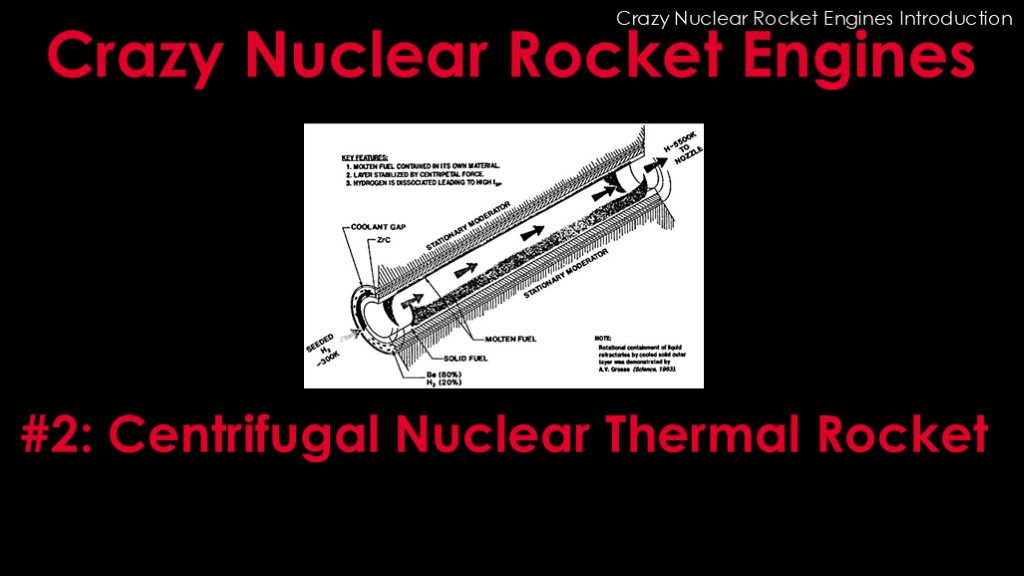
This is episode 2 of the series on crazy nuclear rocket engines, where we will examine the centrifugal nuclear thermal rocket design.
If you haven't watched it, please watch the introduction video now.
http://local.ans.org/ne/wp-content/uploads/2021/02/OverviewCNTR-ANS-Winter-2020-summary-paper.pdf
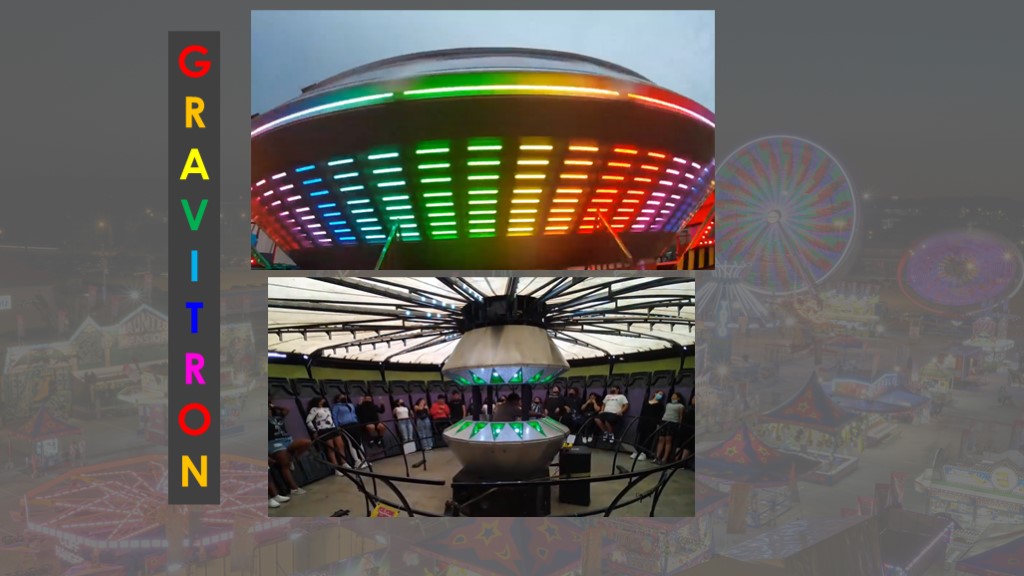
We're going to build a nuclear rocket engine based on a carnival ride. The gravitron.
The gravitron has a large drum that spins around.
The rotational force pushes the occupants to the outside and eventually provides enough force to lift them off their feet.
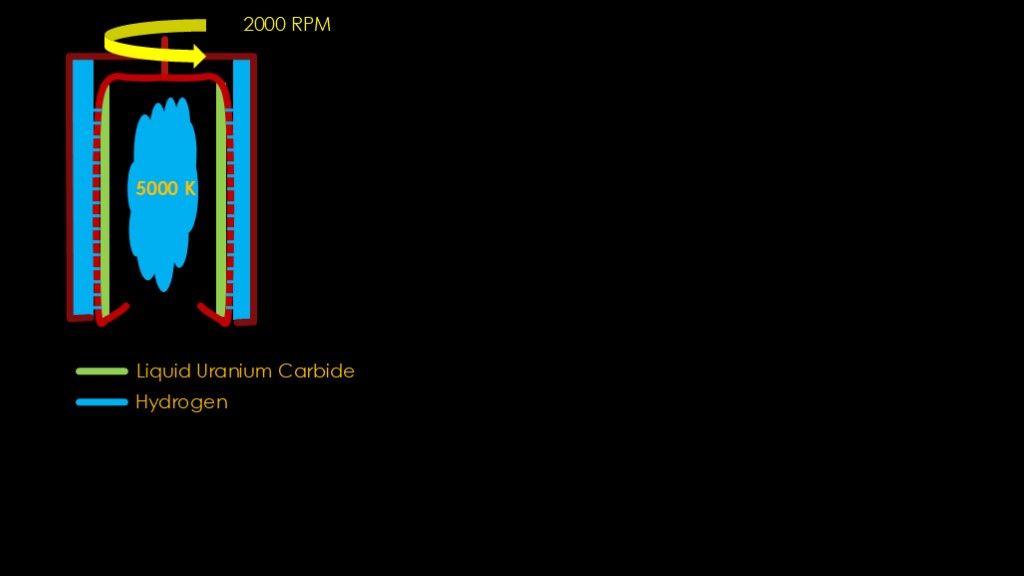
Here's how we build our engine
We build a drum with an axle at the top so that we can spin it around. At a few thousand RPM
Now we can put liquid uranium on the inside of the drum. The force of the spinning drum holds the molten uranium to the wall, and the little lip at the nozzle end keeps the uranium from just slipping out the nozzle.
We can then inject hydrogen into the middle of the reactor, and the hydrogen will... Well, it won't do that much because it's not in contact with the hot liquid uranium. Worse, our drum wants to melt because it doesn't have any cooling.
Hmm....
We add an outer drum and flood the space between it and the inner drum with hydrogen to cool it. And then we drill a bunch of tiny holes in the drum so that the hydrogen can bubble through the molten uranium and get superheated, to 5000 K. Much hotter than the solid core, and therefore giving a specific impulse of about 1500 to 1800.
That sounds great.
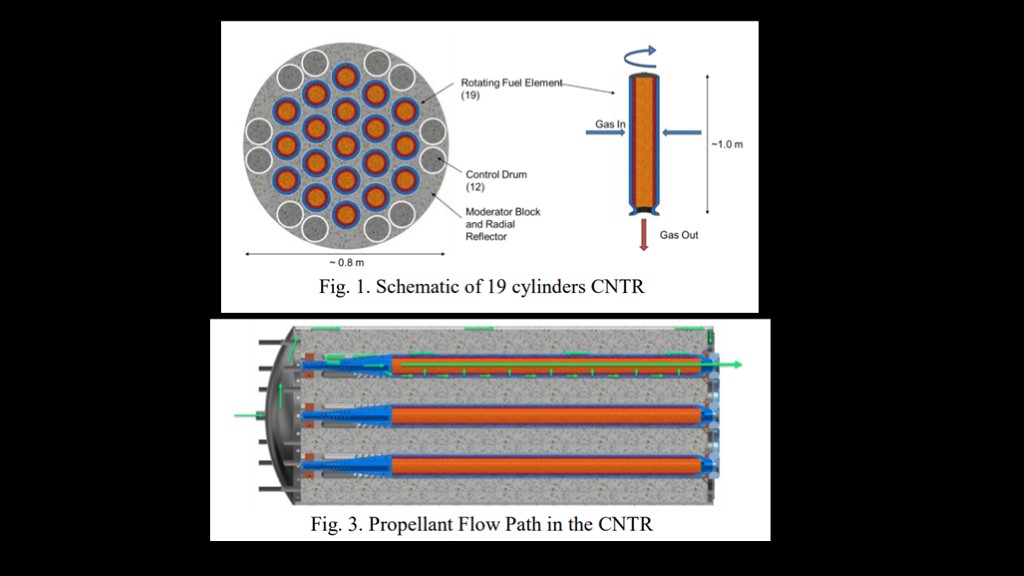
Here's one interpretation of this design. This one use 19 separate rotating cylinders.
https://sci-hub.se/https://arc.aiaa.org/doi/pdf/10.2514/3.28189
https://sci-hub.se/https://arc.aiaa.org/doi/pdf/10.2514/3.2141
http://local.ans.org/ne/wp-content/uploads/2021/02/OverviewCNTR-ANS-Winter-2020-summary-paper.pdf
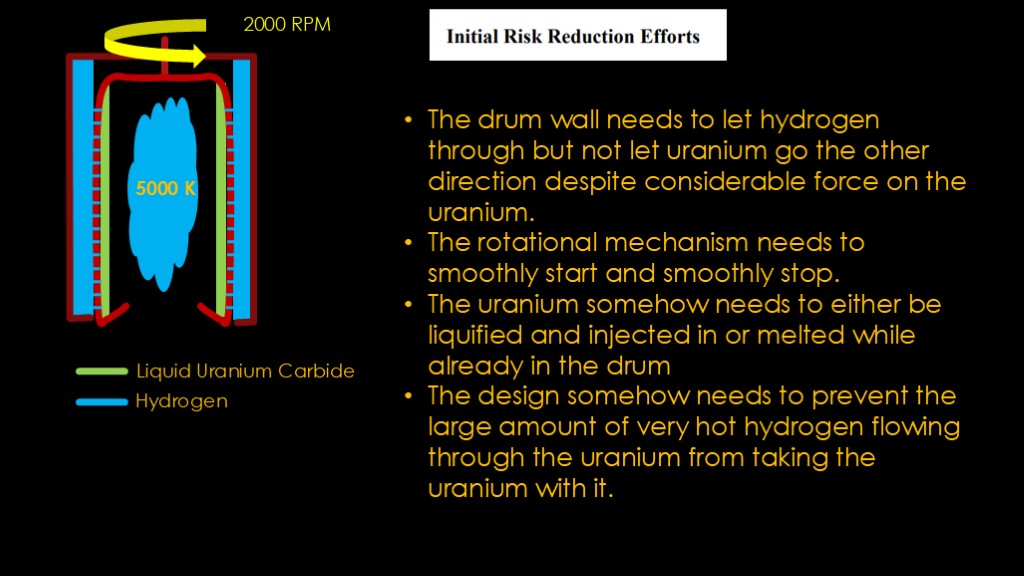
One of the papers on this reactor has a section labelled "Initial Risk Reduction Efforts", which is engineer-speak for "things we don't know how to do that might violate the laws of physics", and I thought that was an appropriate title.
The first problem is the drum. The uranium will have a lot of force trying to push it through the drum wall and yet the drum has to prevent that and let hydrogen go the other way in large volume.
The rotational mechanism will require tight tolerances and needs to be smooth despite being filled with an inherently sloshy load of molten uranium.
Figuring out how the fuel goes from solid to liquid and ends up in the right place will be challenging.
And finally, there is a lot of hydrogen bubbling through the very hot fuel, and that will inevitably cause some uranium to leave the spinning surface, and some of that will be carried out of the reactor by the fast moving hydrogen.
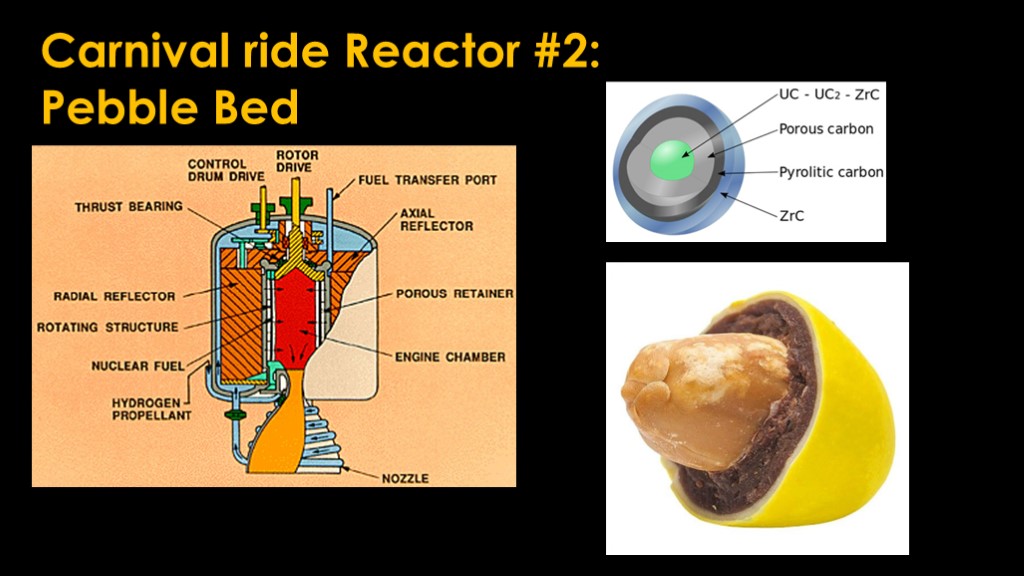
There's a fun variant of this design called the pebble bed, with the same basic architecture but instead of using molten fuel, you use little uranium pebbles.
They're a bit like peanut M&Ms, with the nuclear fuel acting as the peanut, the carbon layers acting as the chocolate, and the zirconium carbide playing the role of the candy coating.
The advantage of pebble beds is that the pebbles are much stronger than the fuel rods and therefore can be run at a higher temperature. Pebble beds have been used in other reactor designs
In the pebble bed engine, you need to spin the engine fast enough that none of the pebbles escape out the nozzle, which seems complicated with a high hydrogen flow, but probably much easier than it is with liquid uranium.
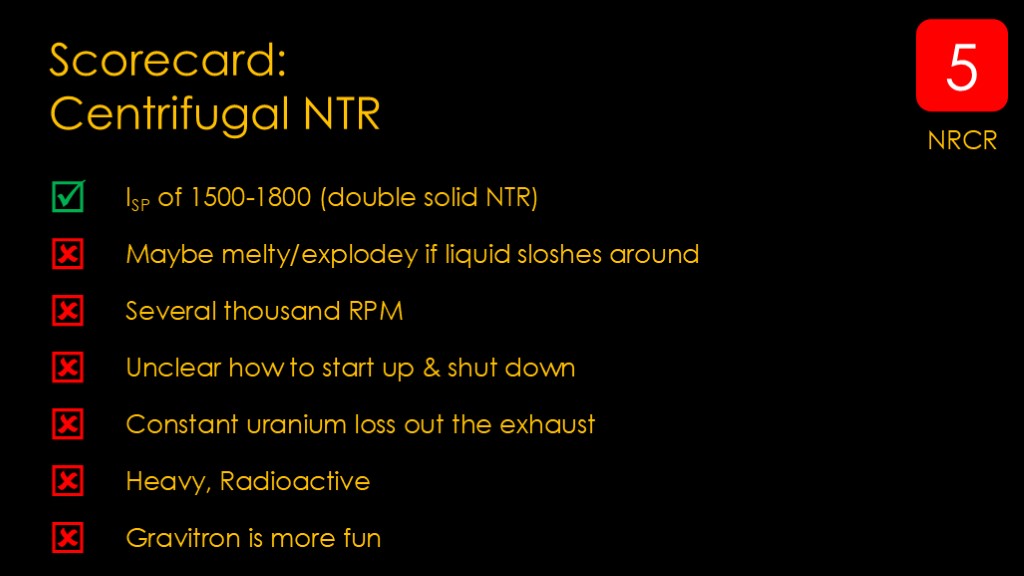
Here's a scorecard for centrifugal nuclear thermal rockets
On the plus side, the liquid version might yield a specific impulse of 1500-1800, or about double a solid nuclear thermal rocket
On the negatives side...
It might become melty or explody if the molten uranium sloshes around rather than staying in a nice smooth layer.
The mechanical design requires a drum rotating at several thousand RPM
It's unclear how to start up and shut down the reactor
There's a potential for constant uranium loss out the exhaust, which not only loses uranium but exposes the crew to more radiation from fission products outside the shielding.
And like other nuclear reactors, it's heavy and it's radioactive.
And finally, gravitor is more fun
I'll give it a 5 for a nuclear rocket craziness rating.
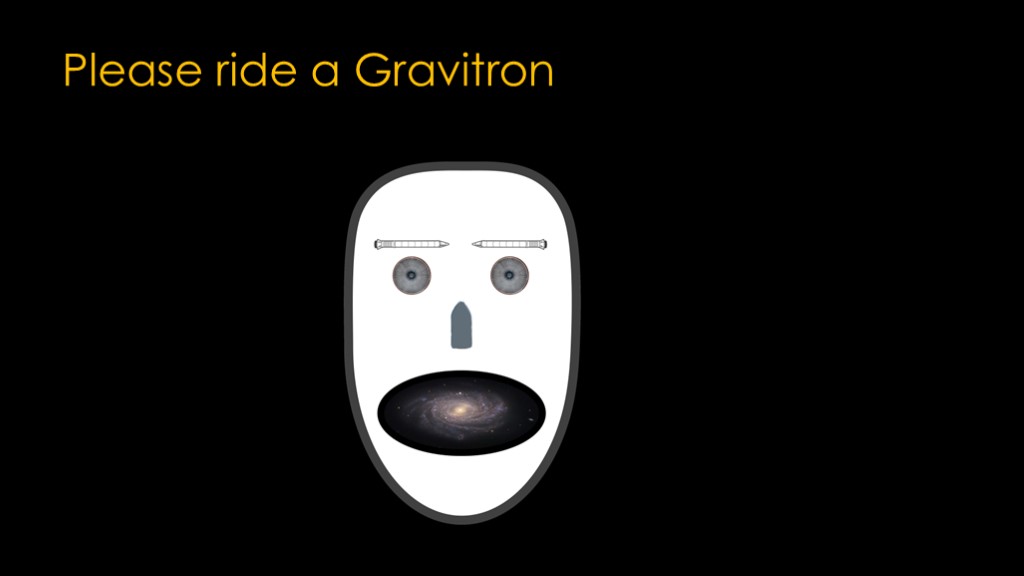
If you enjoyed this video, please find a gravitron and ride it. We will also accept reasonable substitute rides such as gravitor, rotor, or zero gravity.